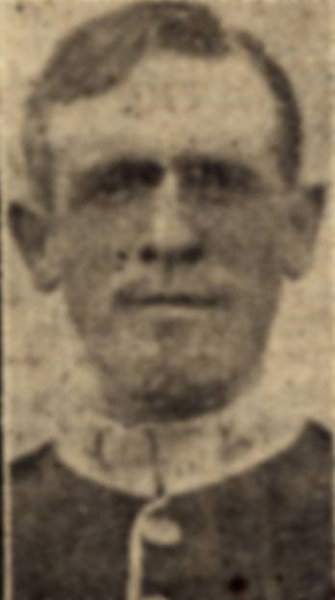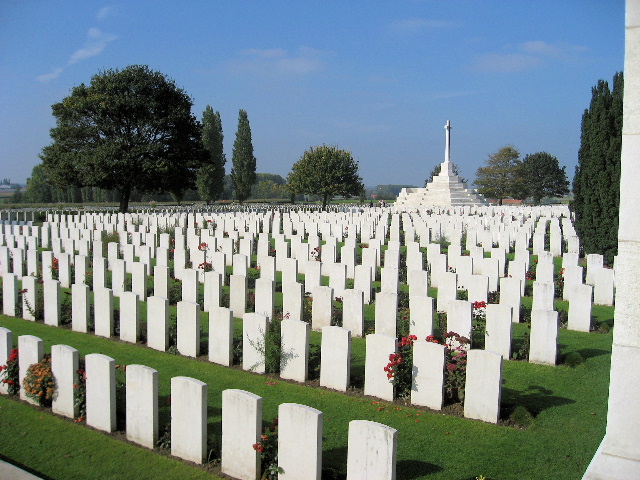Name
Harry Smith (265408)
Conflict
First World War
Date of Death / Age
31/07/1917
27
Rank, Service Number & Service Details
Corporal
265408
Hertfordshire Regiment
1st Bn.
Awards: Service Medals/Honour Awards
1914 (Mons) Star, British War and Victory Medals
Cemetery/Memorial: Name/Reference/Country
TYNE COT CEMETERY
X. D. 5.
Belgium
Headstone Inscription
Not Researched
UK & Other Memorials
Pirton Village War Memorial,
St Mary’s Shrine, Pirton,
Methodist Chapel Plaque, Pirton,
Pirton School Memorial,
4 Co' Hertfordshire Reg' Territorials’ Memorial, Hitchin,
St Mary's Church Roll of Honour (Book), Hitchin,
Hertfordshire Regimental Memorial, All Saints Church, Hertford
Biography
On September 5th 1869 James Smith married Lydia Pearce and together, by 1911 they had six children, but when they married, Lydia already had two children(*1). This was another family in which all members were Pirton born and bred. Harry was the youngest and was born on August 15th 1889.
Harry went to the Pirton School and followed his father to work on the local farms when he left, but by 1914, before the war, he was working for Spencers’ Engineering Works in Hitchin. Also around that time he joined the Hertfordshire Territorials.
The Territorials could not be ordered to serve abroad - their duty lay in home defence, but when war came Harry, like most if not all the other ‘Pirton Terriers’, volunteered to do so and on August 31st 1914 he signed his papers accepting overseas service. The Hertfordshire Regiment was purely a Territorial Army unit, but was preparing for war service and was the obvious home for the local men. The men from the Territorials were partly trained and could be sent to fight sooner than most recruits, but they still required a period of training before facing the enemy. The 1st Battalion were stationed at Bury St. Edmunds and received orders on November 1st 1914 to be ready to go to France on the 5th. They left camp in the morning and by the evening were on the City of Chester sailing for Le Havre. Harry shared the journey with at least one other Pirton man, Arthur Walker. They entered the war almost immediately and Harry would have shared much of the action with Arthur and later another Pirton man, John Parsell, who joined them in the middle of 1915.
The Battalion’s war diary is comprehensive and provides a lot of detail, although typically, rarely mentions the true horrors and conditions of the war. For the period from November 1914 to September 1916 more detail is provided in the chapter on Arthur Walker. However, during that period Harry must have been recognised as a capable man for, on November 9th 1915, he was promoted to the rank of acting Lance Corporal. He was given nine days’ leave, which coincided with Arthur Walker’s, so they travelled back together and presumably Harry attended Arthur’s wedding to Rose Males. In February 1916 his rank was confirmed and then in July he was promoted again, this time to acting Corporal.
In September the Pirton men, John Parsell and Arthur Walker, who were serving with Harry, were hit by the shell explosion, which is described in detail in the chapters on those men. John died almost instantly and Arthur was wounded. Understandably Harry seems to have been deeply affected and he had to ask another Pirton man, Edward Goldsmith, to write to John’s mother on his behalf. Soon afterwards Arthur Walker also died.
Loss, of course, of friends and comrades, did not prevent the war from continuing. In October the Battalion took over the trenches at Hamel and were then very close to the Schwaben Redoubt - one of the German heavily fortified strongholds on the Somme. However, apart from one platoon, they were not involved in attacking it, but they did suffer some of the shelling by the Germans in its defence.
They played their part in the Battle of the Ancre between November 13th and 18th. The British attack was launched in the darkness of early morning and in fog. The men had to move through deep mud in poor visibility, although the scene would have been lit to a certain extent by the tremendous bombardment which accompanied the attack. The war diary says ‘At 5.45am on the 13th just before dawn and in a thick mist the guns opened fire, the Bn went forward, the Cambridgeshires on the left and the East Lancs (19th Division) on the right.’ Sidney Baines of the 4th Bedfords (and Pirton) died on this day in the same battle.
The battle itself was not a huge success and, although gains were made, there were significant losses. The Hertfordshires did better than most, they advanced 1,600 yards, took 250 prisoners and killed many Germans, but between the 13th and 15th the Hertfordshires had 7 officers wounded, 20 other ranks killed, 5 other ranks missing and 115 other ranks wounded. On the 14th, probably as a result of losses, Harry was appointed to acting Lance Serjeant in the field. On December 4th, upon completion of his duties he reverted to Corporal, but was appointed to Lance Serjeant again on the 15th.
In the latter half on November they were on the move, marching to Worloy, Orville and then Candas. There they boarded a train to Esquelbecq and billeted nearby. After a draft of over 150 men had arrived, they moved again by road and rail to Esquelbecq. By the 28th they were in Belgium at Poperinghe and then the next day they were in the dugouts in the Canal Bank, north of Ypres. It was in this area that Harry was to spend the rest of his war.
1917 opened with them back at trenches around Ypres and under an intense barrage as cover for a German raid. The Germans were successful; they took 3 men prisoner, killed 5 more and wounded 14. In February the Hertfords returned the favour, entered the German trenches, capturing 2 Germans, at the cost of 5 men wounded. Harry missed the latter event as at the end of January he caught influenza and was hospitalised in Boulogne. It turned into bronchitis and he was moved to Calais, arriving on February 22nd. His war service record is unclear at this point. He was appointed to the rank of acting Serjeant, probably in early March, and then between March 17th and 31st he appears to have been away from his Battalion, but the explanation is not clear. He rejoined his Battalion on April 1st, the day that they relieved the 1/1st Cambs at Hooge.
They stayed around Ypres and were in and out of the dugouts on the Canal Bank in the Hill Top sector of Ypres for most of May, June and July. He reverted to Corporal ‘at own request’; Harry would have had his reasons but we could find no record of them.
The British were planning a major attack on July 31st. This would later become known as the ‘Third Battle of Ypres’ and the Hertfordshires were to play a major part. On the 30th they were assembled east of the river Steenbeek and ready to advance towards the Battalion objective of Langemarck.
They moved off at 3:50am in four lines and moved forward behind the 116th and 117th Infantry Brigades. The war diary records that to that point ‘casualties had been very slight indeed’, but as they continued, casualties became heavier from sniper and machine gun fire. They continued and at the halfway point they came to a German stronghold, which they charged, capturing it and killing or capturing all the defenders. They continued forward reaching the enemy wire, but the diary records a simple statement ‘On reaching the enemy wire this was found to be practically undamaged (except in one place) and very thick.’ Usually the military tactic was to shell the wire in advance of an attack, using ammunition designed to cut the wire, but so often this simply failed. Using simple language, the war diary describes the horrific results, ‘a handful of men of No.3 Coy got through the only gap and got into the enemy trench & killed a lot of Germans. The remainder of the Bn, being unable to get through the wire and suffering severe casualties from enfilade MG (machine gun) fire & the Germans making a strong counter attack from our left flank about this time, had to fall back having suffered exceptionally heavy casualties.’
Harry had survived over 2 ½ years of fighting, but fell, becoming one of the many who died that day; ‘He was seen to fall just before reaching our final objective.’ The Battalion casualties were 12 officers killed, 2 men missing and 7 wounded. In the other ranks numbers were estimated at 29 killed, 5 missing believed killed, 132 missing, 68 wounded and missing, 223 wounded and 2 died of wounds. This made an incredible total of 478 casualties – nearly half the Battalion strength - a terrible, terrible day.
Harry’s body was found and is buried in the largest of all Commonwealth War Cemeteries, Tyne Cot - huge, sadly impressive, yet beautiful and peaceful.
Tyne Cot lies about five miles north-east of Ypres. It holds the bodies of 11,954 Commonwealth servicemen of the Great War, of which 3,588 lie in named graves. Its rear walls form the memorial for the names of nearly 35,000 men whose bodies were never found.
In recent years a new car park and entrance have been built to the rear and as you walk along the rear wall to the entrance, sombre voices slowly and respectfully read the names of the men within. This, together with the realisation that this is the single largest concentration of graves for the British Army, brings incredible poignancy and emotion to a visit. Even if you never visit another cemetery you must visit this one.
(*1) Willam Pearce (b 1864), Mary Pearce (bapt 1872) – both William and Mary were born before the marriage to James Smith, Emma (bapt 1871), James (bapt 1874), Ruth (bapt 1879), John (b 1882, d 1911), Frank (bapt 1885) and Harry (b 1889).
Additional Information
Text from the book: The Pride of Pirton
Acknowledgments
The Pride of Pirton book – www.pirton.org.uk/prideofpirton Chris Ryan / Tony French / Jonty Wild



